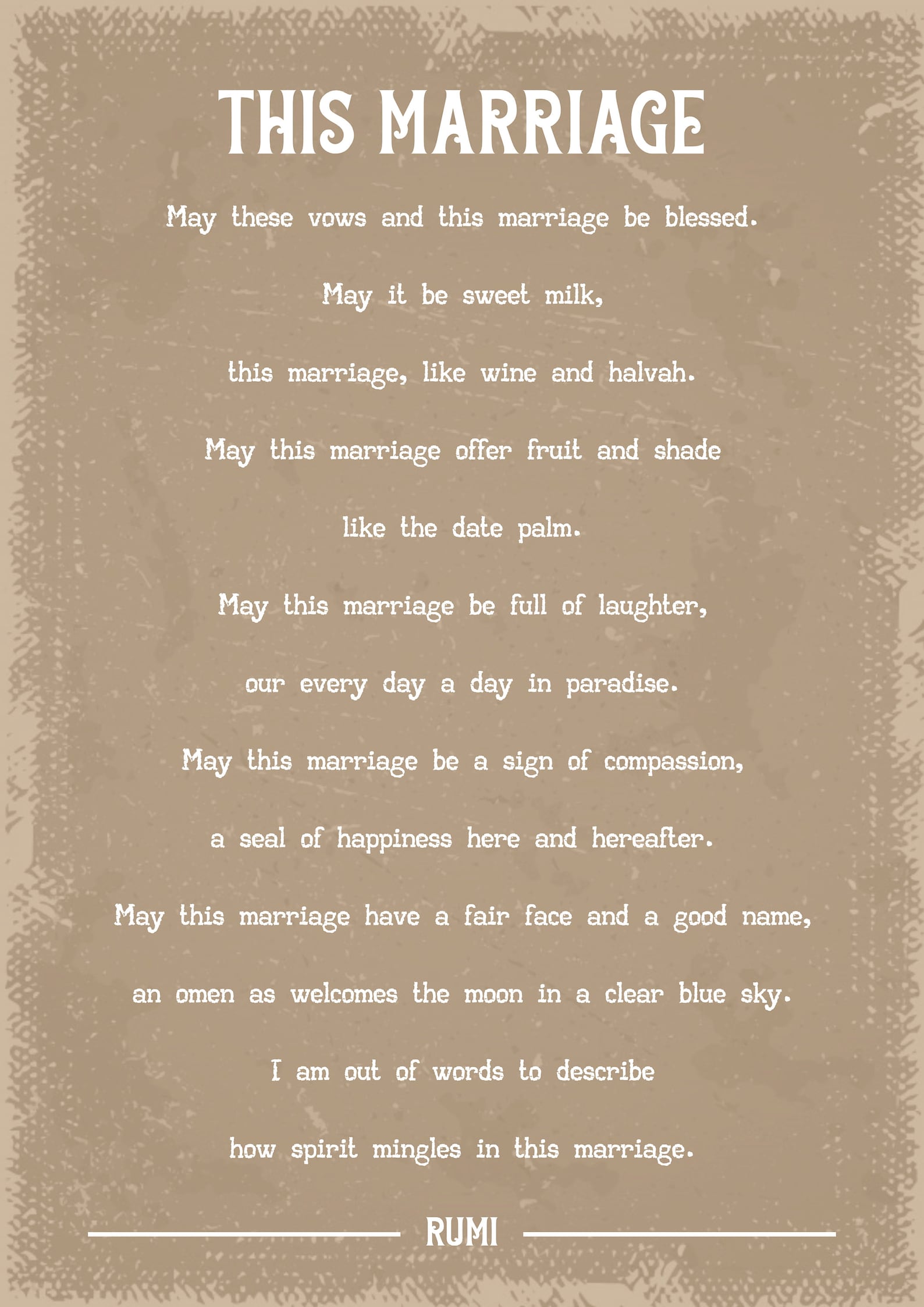
The Enchanting Symphony of Rumi’s Wedding Poem: An Ode to Divine Love
In the tapestry of literary history, Rumi’s Wedding Poem stands as a resplendent masterpiece, a testament to the mystical union of love and longing. This extraordinary work of art evokes the ineffable essence of the sacred bond between two souls, painting a vivid portrait of the transformative journey that unfolds within the realm of divine intimacy.
Rumi Wedding Poem: A Literary Gem
The Rumi Wedding Poem is a profound poetic expression of the ecstatic love shared between the 13th-century Persian poet, Rumi, and his spiritual guide, Shams of Tabriz. It is a testament to the transformative power of the divine embrace, where the boundaries between the mortal and the celestial dissolve, giving rise to a new dimension of being.
Diverse Styles for a Divine Theme
To capture the essence of Rumi’s Wedding Poem, poets can explore a multitude of writing styles, each offering its own unique tapestry of expression. Here are a few considerations:
- Lyricism: Lyrical poems focus on the emotional depth of the experience, employing vivid imagery and evocative language to transport readers to the heart of the mystical union.
- Narrative: Narrative poems tell the story of the wedding, capturing the sequential unfolding of events through a blend of description and dialogue.
- Epithalamion: An epithalamion is a specific type of poem that celebrates a marriage, often employing intricate rhyme schemes and elevated diction.
- Ghazal: A ghazal is a traditional Persian form featuring rhyming couplets and a refrain, providing a suitable structure for exploring the cyclical nature of love and longing.
Rumi Wedding Poem: Poetic Expressions
Poem 1: The Ecstatic Union
Within the sacred sanctuary,
Two souls ignite, a fiery trance.
Love’s alchemy transforms the mundane,
As hearts entwine in a celestial dance.
Poem 2: The Mystic’s Journey
On a path strewn with divine grace,
A seeker embarks on a breathless chase.
Through veils of longing and surrender’s might,
The soul ascends, bathed in celestial light.
Poem 3: The Whirling Dervishes
Like moths drawn to the flame’s embrace,
Whirling dervishes move with ethereal grace.
In their ecstatic dance, heaven and earth align,
A symbol of the divine love that yearns to find.
Writing Rumi Wedding Poems: Insights and Tips
- Immerse yourself in Rumi’s work: Study Rumi’s original poem and delve into its themes, imagery, and rhythmic patterns.
- Explore your own spiritual experiences: Draw inspiration from your personal encounters with love, longing, and the sacred.
- Use vivid language: Paint a vivid picture of the mystical union, employing evocative metaphors and sensory details.
- Respect the tradition: Acknowledge the historical and cultural context of Rumi’s poem while finding your unique voice within it.
FAQ on Rumi Wedding Poem
- Who wrote the Rumi Wedding Poem? Rumi composed the poem in the 13th century.
- What is the main theme of the poem? The divine union of love and longing.
- What poetic devices are used in the poem? Metaphors, similes, and repetition enhance its lyrical beauty.
Conclusion
The Rumi Wedding Poem continues to inspire poets and readers alike, providing a glimpse into the profound beauty and transformative power of divine love. By exploring different writing styles and engaging with the poem’s themes, you too can create your own poetic expressions that honor the timeless essence of Rumi’s masterpiece. Remember, plagiarizing others’ works is unethical; always give credit to the original creators and share your own voice with integrity.
